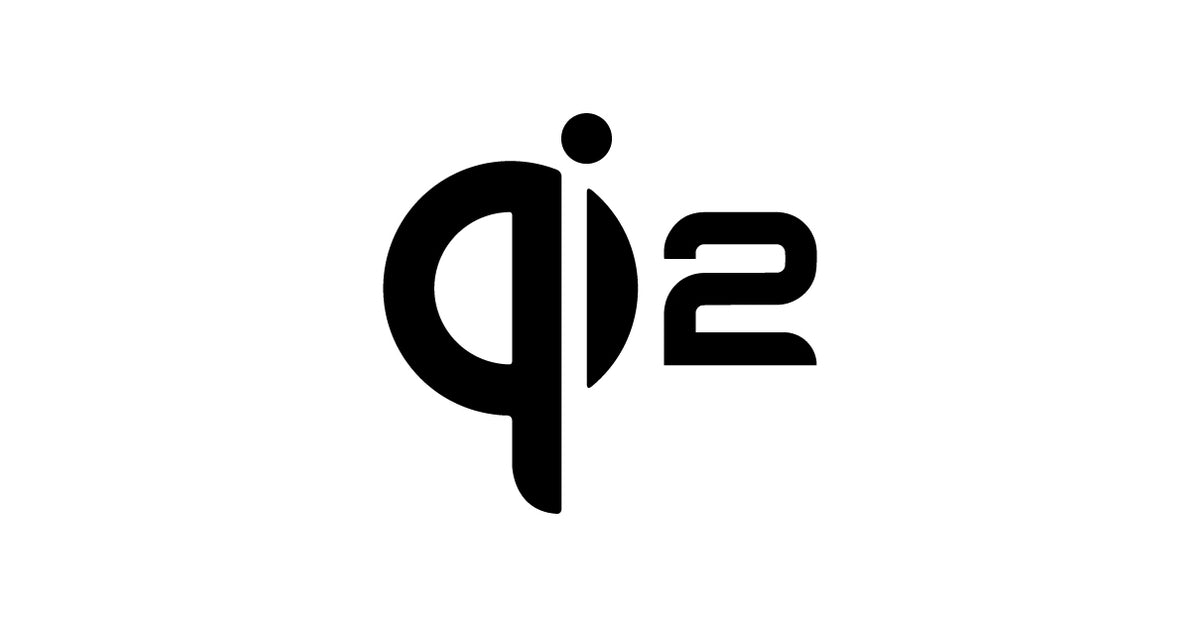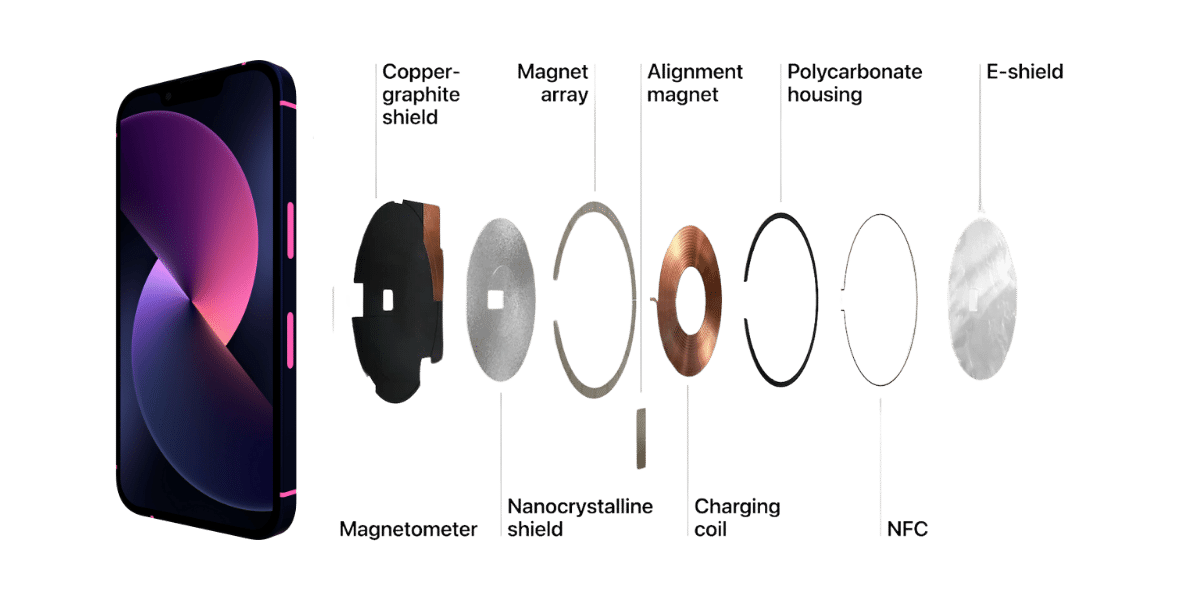What Is The Difference Between MagSafe And Qi2?
Welcome to the world of wireless charging, where cords are a thing of the past and convenience is the name of the game. In this guide, we'll break down all the tech jargon and take a close look at Qi2 and MagSafe, two big players in this field. Read further to learn more!
Qi2 vs. MagSafe: A Head-to-Head Comparison
In the fast-paced world of technology, two giants stand out in the realm of wireless charging: Qi2 and Apple's MagSafe. But how do they stack up against each other?
Qi2: The New Standard
Qi2, pronounced "chee," is derived from the Chinese word for "energy flow." It's a new standard developed by the Wireless Power Consortium (WPC), an international group of companies aiming to create a universal standard for wireless charging.

Qi2 has made waves in the tech world for its faster charging speeds. It achieves this by using higher power transmission, typically around 15 watts, compared to the older Qi standard's 5 to 10 watts. This means less time waiting for your device to charge and more time using it.
The improved magnet alignment in Qi2 is another significant upgrade. This feature relies on the principle of magnetic induction, where an electric current is passed through two coils to create a magnetic field, facilitating energy transfer. Better alignment ensures a more secure and efficient connection.
One of the standout benefits of Qi2 is its compatibility with a wide range of devices. This is due to the WPC's commitment to creating a universal standard that bridges the divide between different device manufacturers.

(Photo Credits: https://www.macrumors.com/)
MagSafe: Apple's Magnetic Marvel
MagSafe, on the other hand, is a proprietary technology developed by Apple. Named after its magnetic connection system used in MacBook chargers, the MagSafe for iPhone was introduced with the iPhone 12 series as a novel approach to wireless charging.
(For more details, check this article: the comprehensive guide of What is MagSafe)

The core of MagSafe's appeal lies in its secure and convenient connection. The built-in magnet array in the charger aligns perfectly with the magnets in the iPhone, snapping into place effortlessly. This magnetic attachment also enables a range of accessories, such as wallets and cases, to be easily attached to the iPhone.
MagSafe is optimized for the iPhone, ensuring a seamless charging experience tailored specifically for Apple users. However, its device compatibility is currently limited to the iPhone 12 series and later.
In terms of power, MagSafe delivers up to 15 watts for the iPhone 12 series and later, matching Qi2's offering. However, unlike Qi2, MagSafe requires specific conditions to reach this peak power output, such as using a 20W or higher power adapter.
Choosing the Right Wireless Charger for You
First things first, take a moment to consider your needs and preferences. Are you always on the go needing a quick power boost? Or perhaps you prefer a leisurely charge while you catch up on your favorite shows. Identifying your charging habits can help you choose between Qi2's speedy performance and MagSafe's convenient connection.
Next, think about the price. Your budget plays a significant role in your choice. While both Qi2 and MagSafe offer high-quality wireless charging, they come at different price points. Qi2, being a universal standard, is often found in more affordably priced chargers. On the other hand, MagSafe, as an Apple product, tends to be pricier.
Now, let's talk features. Both Qi2 and MagSafe have unique offerings. Qi2 excels in its fast charging and broad compatibility, while MagSafe stands out with its secure magnetic attachment and range of iPhone-specific accessories. Weigh these features against your needs to see which one ticks more boxes.
Last but not least, check the compatibility. If you're an Apple user with an iPhone 12 or later, MagSafe might be a no-brainer for you. But if you use multiple devices or non-Apple products, Qi2's wide range of compatibility could be a game-changer.

Apple's MagSafe Ecosystem
Apple has made the MagSafe family bigger by adding more than just chargers. Now, you can get best MagSafe accessories that work as mounts, stands, and even phone cases. All these accessories are made to easily stick onto your iPhone, making things more convenient for you. One noteworthy example is the Thinborne Aramid Fiber MagSafe Ready Case. It's a stylish and protective case that fits perfectly into this system. This case smoothly becomes a part of your daily routine, letting you navigate hands-free and charge wirelessly on MagSafe-friendly pads. It's a great example of how MagSafe accessories have evolved to blend functionality and style using magnets. This whole system, centered around MagSafe, makes your overall experience better.
MagSafe vs. "MagSafe Compatible"
One common source of confusion among consumers is distinguishing between authentic MagSafe chargers and those labeled "MagSafe compatible." Genuine MagSafe chargers have undergone rigorous testing and are certified by Apple for compatibility and safety. In contrast, "MagSafe compatible" chargers lack official certification and are essentially modified Qi chargers with added magnets. While they can magnetically attach to your iPhone, they often offer lower charging speeds, typically 5 to 7.5 watts, compared to genuine MagSafe chargers.
It's essential to recognize that developing a new standard like MagSafe takes time and regulatory approval. Genuine MagSafe chargers require Apple's certification and approval, which can slow down their availability. Some companies, such as Belkin, had a head start by collaborating with Apple before the official MagSafe launch, and their certified chargers are now hitting the market.
However, it's crucial to question the proliferation of clone "MagSafe" chargers available on platforms like Amazon. The explanation is quite straightforward—these are not authentic MagSafe chargers.
Many accessory manufacturers have opted to modify standard Qi chargers by adding magnetic components along the edges to achieve a magnetic connection with the back of iPhone 12 models. The significant difference is that these chargers often deliver only 5W to 7.5W of power, half the speed of Apple's genuine MagSafe charger. These chargers may appear authentic MagSafe chargers but frequently need more transparency in their descriptions. While they don't necessarily misrepresent their products, they can be misleading by providing vague information, leading customers to believe they are purchasing genuine MagSafe chargers.
Several brands have released such chargers, including Sonix, ESR, Anker, RAVPower, Satechi, and others. They typically market these products under their names and are careful not to use the term "MagSafe" to avoid potential issues with Apple's intellectual property.

Which Devices are Qi2 and MagSafe Compatible?
Wondering if your phone is Qi2 wireless charging compatible? Here's the complete list of devices that support this cutting-edge technology:
- iPhone 15
- iPhone 15 Pro
- iPhone 15 Plus
- iPhone 15 Pro Max
- iPhone 14
- iPhone 14 Pro
- iPhone 14 Plus
- iPhone 14 Pro Max
- iPhone 13
- iPhone 13 mini
- iPhone 13 Pro
- iPhone 13 Pro Max
If you own any of these, you're in luck! You can take full advantage of the fast and efficient Qi2 wireless charging.
Which is Better, Qi2 or MagSafe?
If you don't have a Qi2-compatible device, you're better off sticking with a MagSafe charger as it provides faster charging speeds. However, there's an exception to this if you plan to purchase an iPhone 15 or another device that adopts Qi2, in which case the choice between Qi2 and MagSafe becomes more flexible.
Looking ahead, it's likely that MagSafe and Qi2 will coexist in the market, with MagSafe maintaining its premium status. MagSafe chargers may feature premium materials like leather and metal, whereas Qi2 devices might lean towards using more plastic due to cost considerations. It's worth noting that MagSafe devices undergo approval and testing by Apple, which comes with a licensing fee. In contrast, Qi2 development is inherently more affordable, given its association with Apple's lower costs.
There's also the exciting possibility that Apple will enhance MagSafe in the future, potentially introducing faster charging or data support. Until then, users will have the freedom to choose their preferred charger. They can enjoy equal charging speed and magnetic capabilities, assuming Qi2 becomes available on iPhones in the near future.
Products Featured In This Blog
What's the difference between Qi and Qi2?
Wireless charging can be a bit tricky. For it to work, the copper wires in your phone and charger need to be super close. If they're not lined up just right, the charging speed can drop big time. That’s where traditional Qi charging sometimes falls short. It can be hit or miss, and the rate at which your phone charges can vary based on how it’s placed on the charger.
Enter Qi2, the game changer. It uses magnets to make sure your phone and charger are always perfectly positioned. This boosts charging efficiency and could potentially speed up the charging process. So no more guessing games about where to place your phone!
Is Samsung compatible with Qi2?
Right now, only the newest iPhones have passed the test for Qi2 certification. This covers things like charging speed, magnetic strength, and device compatibility. As of today, no Android devices, including Samsung phones, are Qi2 compatible.
But don't worry, there are workarounds. You can buy MagSafe charging cases and add-ons for Android phones and even non-MagSafe Apple devices. These accessories, like cases with magnetic rings, can help make your phone Qi2 ready.
Unfortunately, Samsung Galaxy S24 series phones still don't support Qi2 wireless charging. If you're after the quickest charge, your best bet is to go old school with wired charging. The S24 Ultra and S24+ can handle fast wired charging at 45W, and the S24 can do 25W. Just grab an extra cable and charging block, and you'll have your phone powered up in no time.
Will a Qi2 wireless charger work with an older Android phone?
Yes! Qi2 wireless chargers play nice with older Android phones. They're backward compatible, so you won't have any issues there. But here's the catch: you won't be able to benefit from the super-fast charging speeds that Qi2 offers. So, if you're shopping for a wireless charger and want to future-proof your setup, go for one with Qi2.




